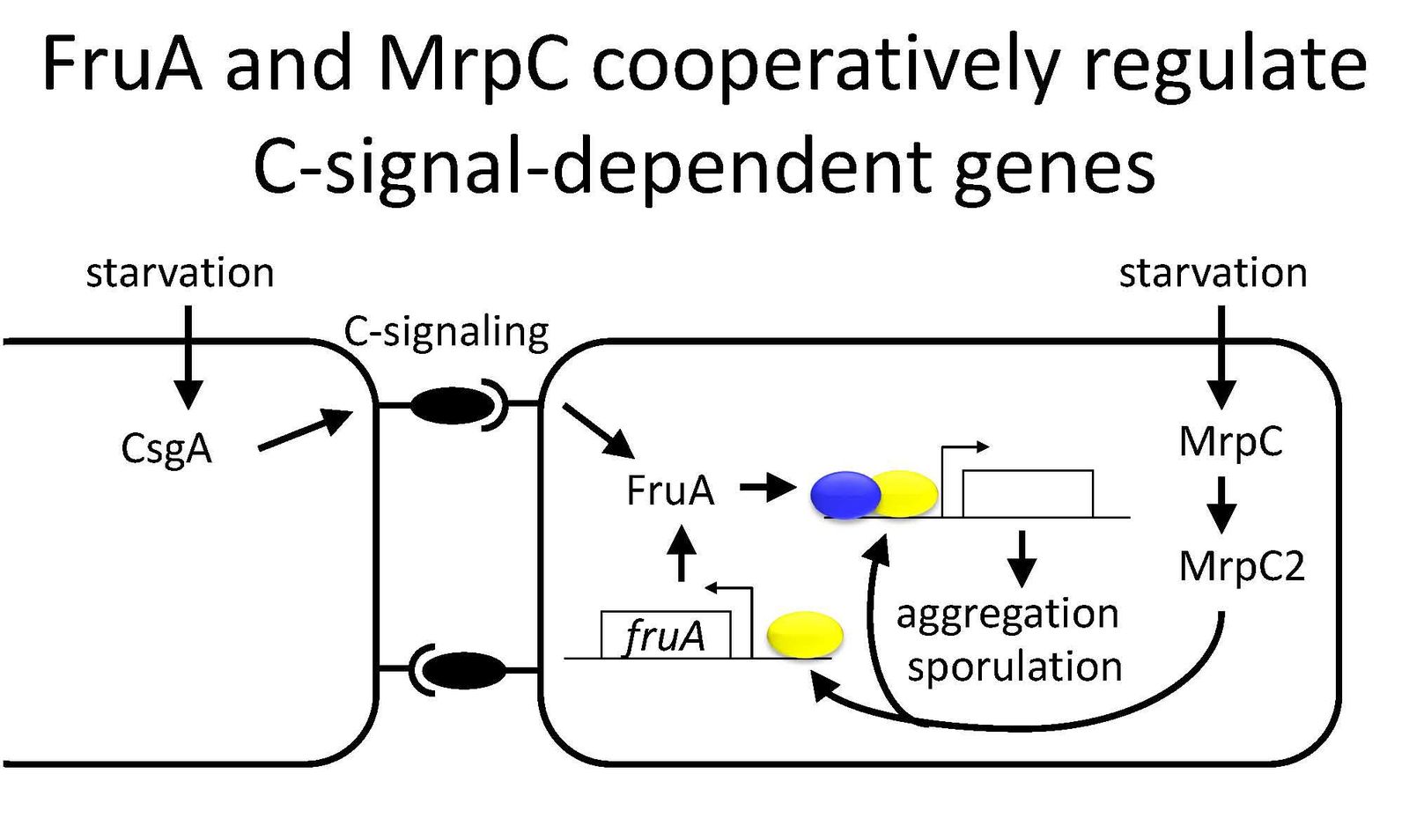Research: Project 5

Expression of CsgA and MrpC increase in starving M. xanthus cells. CsgA is cleaved by a protease at the cell surface, where it is believed to act as the C-signal, although a receptor has not been identified. C-signaling requires close proximity (possibly contact) between cells and leads to activation of FruA, which is produced in response to MrpC2. Activated FruA and MrpC2 bind cooperatively to promoter regions of genes involved in aggregation and sporulation. MrpC2 is an N-terminally-truncated form of MrpC produced by proteolytic cleavage or by utilization of an alternative translation start codon.